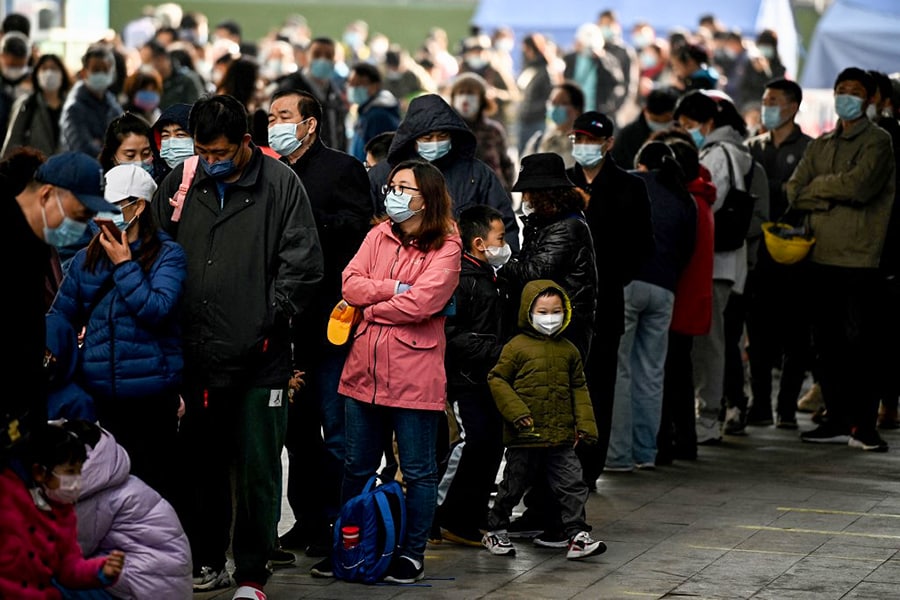
As Covid-19 grips again, can China's zero-Covid strategy hold?
After two years of virtually closed borders, mass testing, targeted lockdowns and quarantines, China's strategy is being stress-tested like never before as cases surge across the country
 People queue to be tested for the Covid-19 coronavirus in Beijing on March 14, 2022, amid a record surge of infections across China. (Credit: Noel Celis / AFP)
People queue to be tested for the Covid-19 coronavirus in Beijing on March 14, 2022, amid a record surge of infections across China. (Credit: Noel Celis / AFP)
Beijing, China: China, the country where the coronavirus was first detected in 2019, is among the last remaining devotees to a zero-Covid approach to the pandemic.
But after two years of virtually closed borders, mass testing, targeted lockdowns and quarantines, the strategy is being stress-tested like never before as cases surge across the country.
With millions currently under lockdown, can China's approach hold out against the march of the Omicron variant?
What is zero-Covid? China essentially closed itself off from the world in March 2020 to follow a formula it calls "dynamic zero" for curbing outbreaks: strict lockdowns and immediate mass testing.







